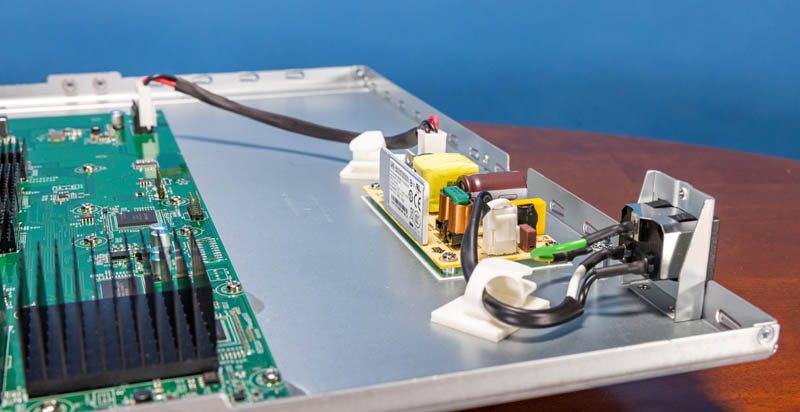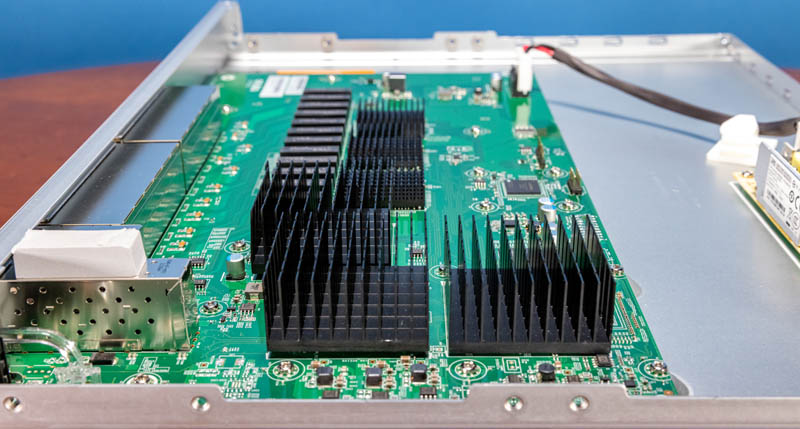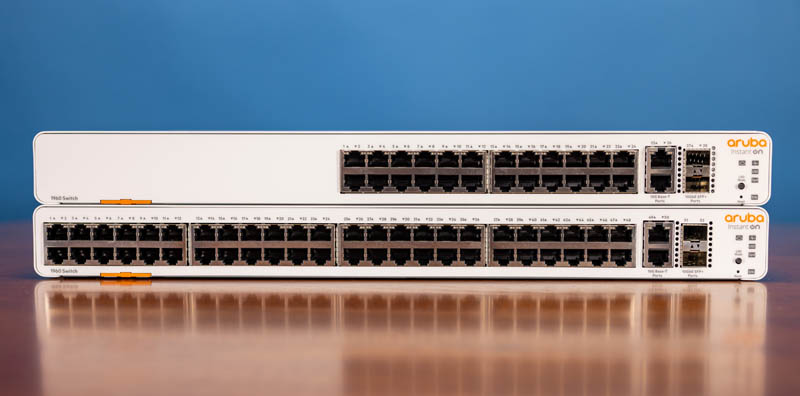HPE Aruba Instant On 1960 24G 2XGT 2SFP+ Switch Power Consumption
In terms of power consumption, we saw relatively low power. When we had the device completely idle, we saw under 10W, down slightly from 12W we saw on the 48-port version. Aruba’s spec sheet says 60-80W at idle based on the input voltage. Our sense is that is likely with a full set of optics and connected devices which is different from how we test idle.

Overall, this is a very lightweight unit in terms of power consumption.
HPE Aruba Instant On 1960 24G 2XGT 2SFP+ Switch Pricing and Market Analysis
In terms of pricing, the Aruba Instant On 1960 series is positioned in an interesting space. The pricing is all-in so there are no extra licenses and no fees for cloud management. The list price is $800, but we have seen street pricing with discounts of 15-25% so we think that one will be able to get this switch for well under $700 via a quick Google search.

With that, the pricing is very attractive versus competitors like Cisco, Netgear, and other traditional SMB players, especially once those extra costs are factored in. On the other hand, players like Ubiquiti and smaller SMB vendors like MikroTik have much more attractive pricing on this class of switch. There are certainly going to be vendor preferences involved, and if you are at a company that already uses Aruba, then this may be the logical choice. Aruba certainly has a premium product that feels more polished than a MikroTik (and even Netgear) but it is also at a discount to some of the other large vendors.
Still, the 24-port market with 10GbE and some GUI management is very crowded so we expect this to come under more pricing pressure in the future.
Final Words
Overall, we think Aruba has done a great job with the Instant On 1960 series. The 24-port version is awesome with passive cooling. That makes this switch easier to deploy. At the same time, we have seen many fanless 24-port plus 10GbE switches over the years.

HPE Aruba is a much larger vendor than some of the smaller SMB vendors that offer lower-cost products, so there are companies that will gravitate to the solution just based on name brand. We do wish that these switches included a bit more of a forward-thinking feature set. These are still 1GbE units, not 2.5GbE. That was a missed opportunity for this line.
Now that we have reviewed two of the switches in this line, we feel that HPE Aruba did a great job on the switches. Having nice hardware, software, and all-in pricing means that the overall package is easy to understand and works well.




Sigh, I was all ready to learn about how fast these would start forwarding packets after a cold power up, but alas their ‘instant on’ is just marketing. Managed switches and routers have always suffered horrible boot times measuring into the minutes realm. We should all be holding these companies feet to the fire to makes their devices boot faster than the servers connected to them.
Don’t switches stay on 99.9% of the time?
Does the use of the vent in the 24-port model mean that it can only be racked at the top of the stack?
Obviously 24-port switches aren’t the first choice in situations where you’ll be cramming them in for port density; but given the tendency of demand for ports to creep up over time and the often-cramped ersatz wiring closets commonly populated by switches deliberately priced lower than the fancy enterprise options having to remember that a specific switch has to either go on top or have 1U or more of blank space included will probably bite a few people if that is in fact required.
Fanless is certainly appreciated for deskside use; but a top vent looks awfully like a violation of the tacit assumption that rackmount gear may make demands in terms of how cold the cold aisle is; and how much unimpeded flow-through they’ll be allowed; but aren’t really supposed to have binding opinions about what is above or below them. It’s a pity that they couldn’t have made it work with some combination of front, rear, and side vents.
@eug – In theory, yes they stay on all the time; that’s been my experience until they break. In practice there should be scheduled downtime (and we all do that, right?) to perform code upgrades that avoids or minimizes impact to users.
I am starting to question the rationality of Rohit’s reviews… or the quality of editorial and grammatical review at STH.
Saying the switch has an IP address and it uses DHCP in the same sentence shows a lack of understanding in those technologies, or a rush to get a review out the door. And I doubt that anyone installing this switch, after dropping a few C-notes for it, is a complete n00b that would nuke their own network; the threat implied by using an IP address that duplicates many SMB routers.
I suspect this switch actually attempts to use DHCP first. If DHCP fails to obtain a lease, then it defaults to it’s assigned IP address rather than resorting to APIPA addressing. And that assigned IP address of 192.168.1.1 IS a POOR CHOICE. Patrick, I’ll take a few $$ to rewrite a properly worded review for this product, thank you.
This review makes me wonder if Rohit ever found the loose screw between the keyboard and his chair. /facepalm/